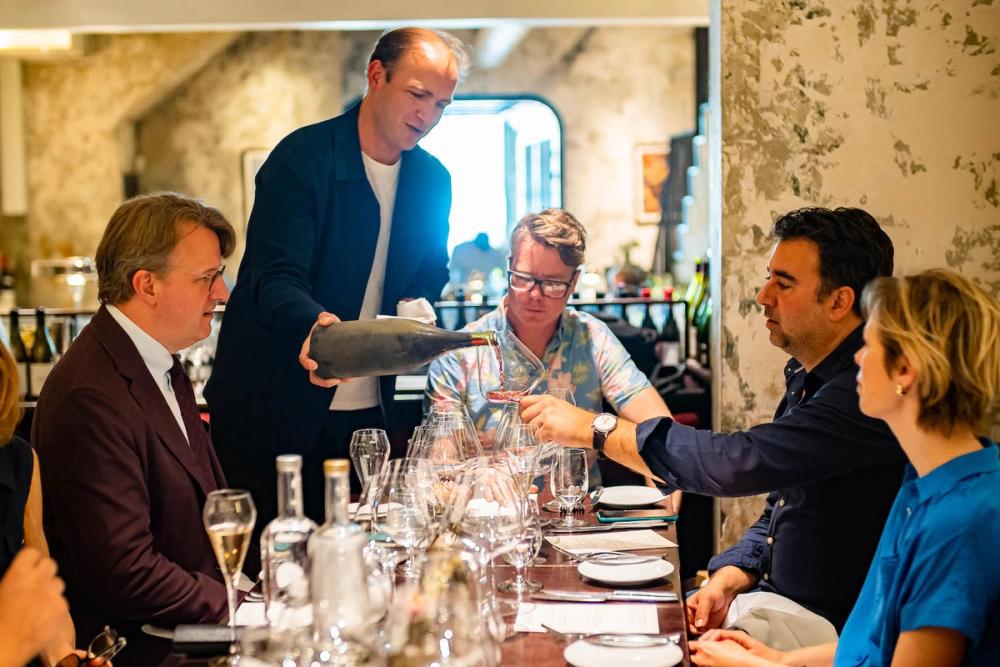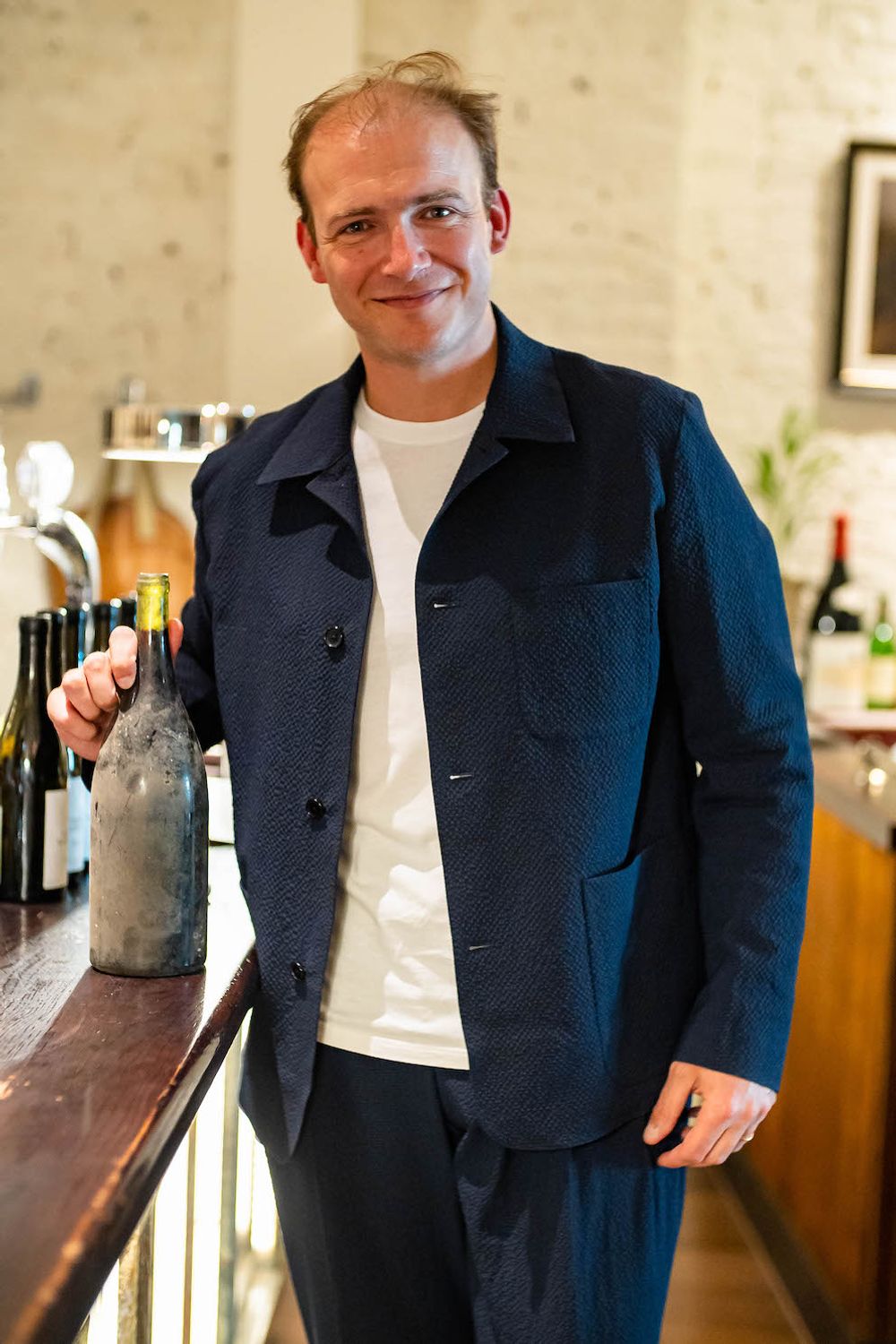“Château du Moulin-à-Vent owner, Parinet feels that now is the perfect time for a tasting like this, a chance to look back on what’s been achieved in this time and how the wines have changed,” writes Wilson.
There’s a lot to be said for streaming music services. When it comes to listening to music they are all that my kids – aged 9 and 7 – use, and I’m partial to some on-demand music too, dipping in and out of different bands and genres as the mood takes me. One minute it’s heavy metal, the next drum & bass.
I find that many wine tastings are similar in that one moment you’re tasting Left Bank Bordeaux, the next Finger Lakes Riesling, it certainly opens the eyes to the breadth of wine on the market.
I enjoy this pick ‘n’ mix approach to wine tasting and to music listening, but now and again the purist in me likes to listen to an album from start to finish, in the correct order, so when the opportunity came up to taste 10 years of cru Beaujolais from Château du Moulin-à-Vent I jumped straight into the mosh pit.
For me vertical tastings, especially ones which stretch to a decade or more of unbroken vintages, feel a bit like sticking the needle down on Side 1 / Track 1 of an album and not stopping until the very end of the flipside. They offer a rare glimpse of a certain period of time; there’s a progression here and a story to be told which weaves the wines together.

Edouard Parinet serving the lunch wines, Wilson takes notes (centre)
Evolution of winemaking and availability of resources
Château du Moulin-à-Vent is one of the most historic producers in Beaujolais. Located at the northernmost tip of the Moulin-à-Vent appellation it boasts 75 hectares of vines across 120 different plots, many of which house old Gamay vines.
The high density plots straddle silica and iron oxide soils, and grapes have been grown here since the 17th century with the first wine carrying the domaine name appearing in 1921. All wines are domaine grown and bottled.
Presenting the wines at the vertical tasting – hosted at the ever-impressive Cabotte restaurant in the City of London – were Château du Moulin-à-Vent winemaker Brice Laffond and Edouard Parinet who, along with his father, took over the domaine in 2009.
They say that the key to the domaine’s wines, and the evolution of the winemaking over the past decade, is the resources available to Brice Laffond. The different parcels of grapes, the different soil types and the vineyards’ differing aspects offer him a diverse patchwork to work with when crafting the wines. He keeps wines from each parcel of fruit separate and uses different fermentation and maturation vessels to offer a vast array of blending opportunities when the time is right.

Edouard Parinet: consumers are driving the interest in Cru wines
“The goal is not to produce fine wine, but to produce wines that are good at all times,” says Parinet, who is thrilled that over the past decade the interest in Beaujolais Cru wines and the Gamay grape in general has increased.
“Interest in Cru wines is coming from the consumer,” he says, and in Gamay “we have a variety which has a lot of drinkability.”
This drinkability is certainly on show at the tasting and, with 10 years under his belt at Château du Moulin-à-Vent, Parinet feels that now is the perfect time for a tasting like this, a chance to look back on what’s been achieved in this time and how the wines have changed.
There’s certainly diversity among the wines, some clear hit singles and some more muted ‘album tracks’, wines that wither slightly alongside the best of the decade, but nevertheless are forthright and tell their own story (and that of the vintage) when tasted again in isolation.
Château du Moulin-à-Vent Vertical: 2010-2019

2010
Parinet says this was austere when young, but is a very different wine now. Dusty nose, red fruit, raspberries, some oxidative characteristics. Full and broad on the palate; raspberry fruit, lovely refreshing acidity, very soft tannins. A savoury bacon fat note on the close.
2011
A warm vintage with an August harvest. Plums on the nose, lithe with pomegranate fruit in the mouth. Velvet-like with rounded edges and keen acidity, but everything in the right place.
2012
A tricky vintage with mildew pressure resulting in low yield and lots of sorting. Fruit a little numbed, more savoury than fruity with a Marmite note and proud tannins.
2013
Bright nose – the brightest yet – with smoke and liquorice. Darker berries on the palate; black cherry. Some creaminess like yoghurt with black fruit compote. A white pepper kick on the finish.
2014
Nose of beef consommé. Lovely on the palate; smooth and bright, pings with lithe red fruits, kicks with acid. A shiny, deft wine.
2015
Ripe fruit at first, however, overall a little flatter. In some ways more developed than the 2012 and 2013 wines but fruit not as keen on the palate. Strong tannins too, a little out of balance. “A particular style made in this vintage,” says Parinet. Indeed.
2016
A classic growing season resulting in a wine with plenty of sweetness of fruit. A lush, velvet-like mouthfeel and a savoury finish. Lovely, pretty and floral.
2017
A purer wine, less oak and intense red and black fruit. Very generous with a mineral background and crunchy acid finish. Fine.
2018
Meaty and savoury with smoked bacon fat yet lovely complementary fruit; redcurrants and red berries. Defined tannins and a kick of acid which will mellow over time and fall back into balance.
2019
This is the current vintage available in the UK. It’s approachable but way off its best. Rounded and bright but yet to gain any complexity. You can taste how warm the year was, it’s a smooth, seductive wine which will get better and better.










































